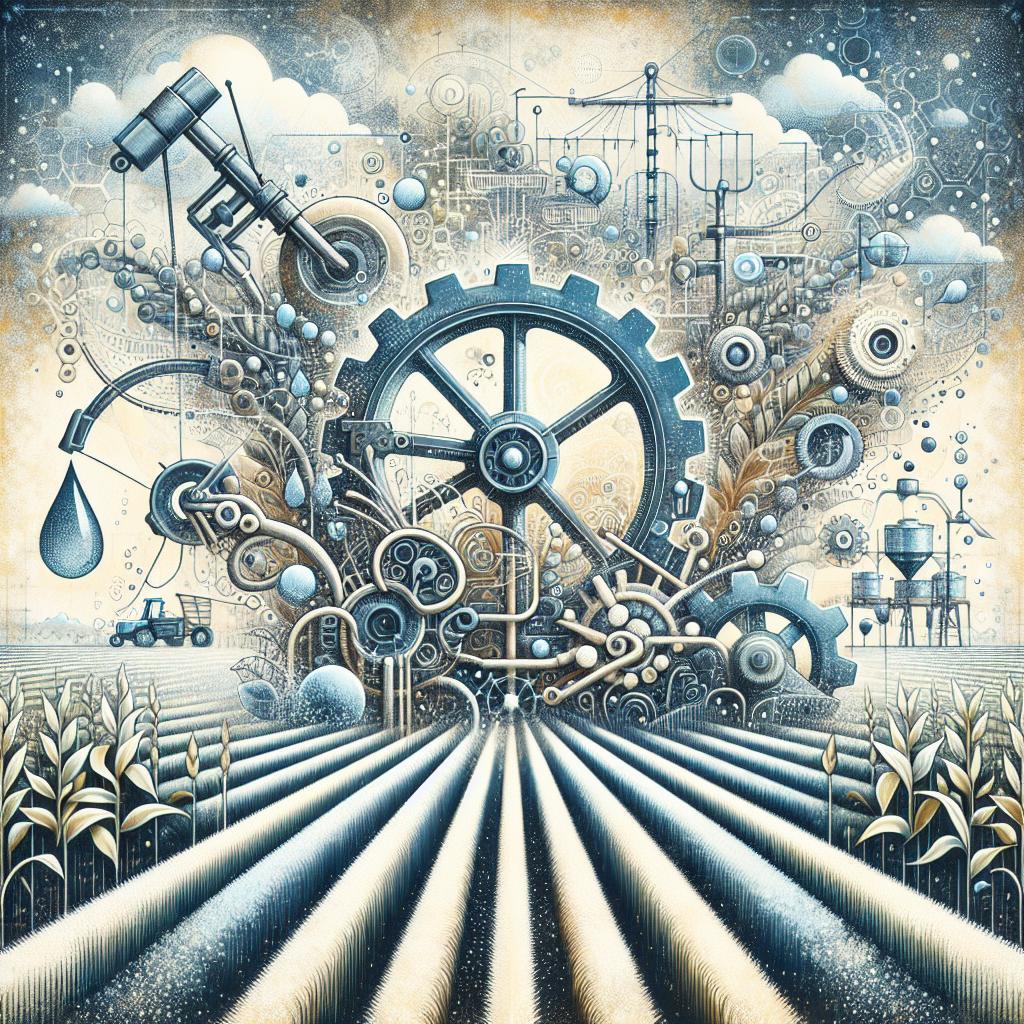This post may contain affiliate links which means I may receive a commission for purchases made through links. Learn more on my Private Policy page.
Unlocking the Secrets of Successful Farming: Crafting the Perfect Maintenance Schedule for Your Irrigation System
Welcome to the heart of your farm—the lush fields that promise a bountiful harvest and the gentle hum of your irrigation system, ever working in harmony with nature. Just as we diligently nurture our crops, our irrigation systems deserve the same attention and care. Think of your maintenance schedule as the farmer’s secret recipe—a blend of timing, consistency, and insight that ensures your crops thrive while conserving precious resources. In this friendly guide, we’ll explore the ins and outs of creating the ultimate maintenance routine for your irrigation system, transforming it from a mere necessity into a partner in your agricultural journey. So grab your favorite cup of coffee and let’s dig into the essentials that will keep your irrigation running smoothly and your fields flourishing!
Essential Components of Your Irrigation System: Understanding What Needs Attention
To ensure optimal performance of your irrigation system, it is crucial to focus on specific components that require regular attention. Pipes and Fittings should be inspected for leaks and cracks, as water loss can significantly impact efficiency. Additionally, valves play a pivotal role in controlling water flow; therefore, checking them for blockages or wear can prevent operational disruptions. Other essential elements include filters that need to be cleaned periodically to maintain water quality and prevent clogging of smaller system parts.
Another vital component to consider is the sprinkler heads or drip emitters, which should be checked for proper operation and coverage. Timers and Controllers should be tested to ensure they are functioning correctly and programmed to meet the specific needs of your crops. Lastly, the overall system layout should be reviewed; ensuring proper alignment and spacing can optimize water distribution across your fields. Below is a simple maintenance checklist to help you keep track of your irrigation system’s essential components:
| Component | Maintenance Action | Frequency |
|---|---|---|
| Pipe and Fittings | Inspect for leaks and cracks | Monthly |
| Valves | Check for blockages | Bi-Monthly |
| Filters | Clean and replace if necessary | Quarterly |
| Sprinkler Heads | Test for coverage | Monthly |
| Timers and Controllers | Verify settings and functionality | Monthly |

Crafting Your Custom Maintenance Schedule: Tailoring Care for Optimal Performance
Creating a personalized maintenance schedule for your irrigation system is essential to ensure your farm runs smoothly and efficiently. Begin by assessing the specific needs of your crops and local climate conditions; this will guide the frequency and type of maintenance required. Consider factors like soil moisture levels, seasonal weather changes, and the age of your system. A well-tailored schedule not only maximizes performance but also extends the life of your equipment. Here are some key points to include:
- Regular Inspections: Schedule monthly checks to identify leaks, clogs, or damaged components.
- Seasonal Overhauls: Perform comprehensive system checks before planting and after harvest.
- Water Quality Testing: Conduct water tests quarterly to ensure quality remains suitable for your crops.
Consider documenting your maintenance activities in a simple table to streamline your process and keep track of services performed. This visual reference can help you stay organized and proactive:
| Task | Frequency | Notes |
|---|---|---|
| Inspect valves and filters | Monthly | Look for signs of wear and blockages |
| Flush irrigation lines | Quarterly | Removes sediments that can disrupt flow |
| Calibrate system pressure | Annually | Ensure optimal performance and efficiency |
By implementing these tailored strategies, you will maintain a robust irrigation system that supports your farming goals and nurtures your crops effectively. Remember, a little foresight in planning can yield great rewards in crop quality and yield!

Seasonal Checklists: Key Tasks to Keep Your Irrigation Flowing Smoothly
Staying ahead of the seasons with a well-planned maintenance schedule can be the difference between a thriving farm and a struggling one. As you prepare for each season, consider the following essential tasks:
- Spring: Inspect and clean filters; check for leaks and cracks in pipes; adjust sprinkler heads for optimal coverage.
- Summer: Monitor soil moisture levels; flush out lines to eliminate blockages; ensure timer settings are accurate for changing weather.
- Fall: Drain the system to prevent winter freeze damage; apply winterization methods; check for heavy debris build-up.
- Winter: Review and plan for next season’s needs; replace any worn components; assess overall system performance.
By incorporating these seasonal tasks, you ensure a seamless operation throughout the year. To streamline this process, you can reference a simple checklist tailored to your system:
| Season | Key Task |
|---|---|
| Spring | Inspect & Clean Filters |
| Summer | Monitor Soil Moisture |
| Fall | Drain System |
| Winter | Replace Worn Components |

Troubleshooting Tips: Identifying Common Issues Before They Become Major Headaches
Regular maintenance of your farm irrigation system is crucial to preventing minor hiccups from escalating into significant problems. Start by performing visual inspections of your irrigation components. Look for signs of wear or damage, such as cracks in pipes or rusting on metal parts. Additionally, check for any clogs in the filters and emitters, which can impede water flow and lead to inefficient irrigation. To make identifying these issues easier, consider creating a seasonal maintenance checklist that outlines what to inspect and when.
Another important aspect is to monitor the water pressure regularly. Fluctuations can indicate underlying issues within the system. To help you stay on top of the essential parameters, use the following table to track critical maintenance checks and recommended frequency:
| Maintenance Task | Frequency |
|---|---|
| Visual Inspection of Pipes | Every 3 Months |
| Filter Cleaning | Monthly |
| Pressure Check | Bi-Weekly |
| Valve Functionality | Twice a Year |
Future Outlook
cultivating a thriving farm isn’t just about planting seeds and hoping for rain; it’s about nurturing the very foundation of growth—your irrigation system. Just like a well-tuned instrument, your irrigation setup requires regular attention and care to deliver the sweet symphony of flourishing crops. By creating and adhering to a thoughtful maintenance schedule, you’re not only maximizing efficiency but also ensuring that every drop of water contributes to the harvest of your dreams.
So, grab those tools, roll up your sleeves, and embrace the rhythm of maintenance as part of your farming journey. Remember, a little investment of time and effort today can yield bountiful rewards tomorrow. Happy farming, and may your fields be forever lush and green!
This post may contain affiliate links which means I may receive a commission for purchases made through links. Learn more on my Private Policy page.

